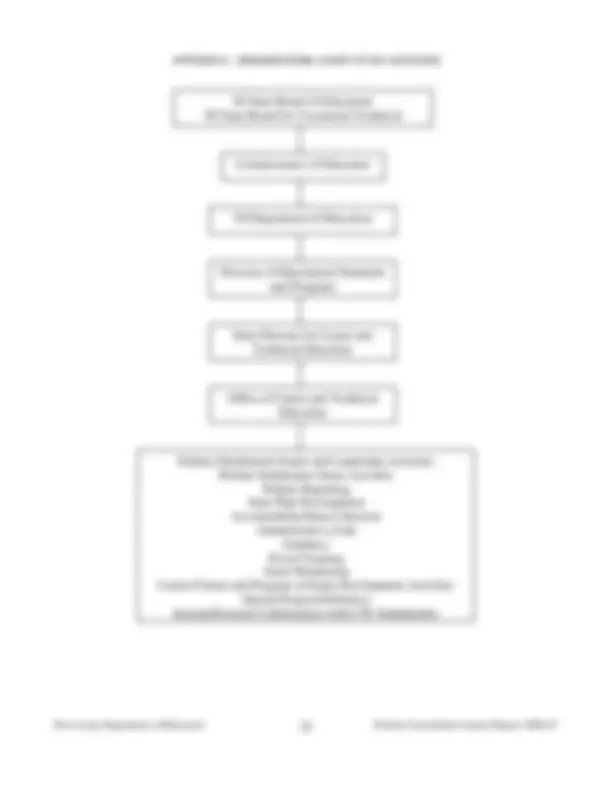









































Study with the several resources on Docsity

Earn points by helping other students or get them with a premium plan


Prepare for your exams
Study with the several resources on Docsity

Earn points to download
Earn points by helping other students or get them with a premium plan
Community
Ask the community for help and clear up your study doubts
Discover the best universities in your country according to Docsity users
Free resources
Download our free guides on studying techniques, anxiety management strategies, and thesis advice from Docsity tutors
The NJ Department of Education (NJDOE), through the Office of Career and Technical Education (OCTE) within the. Division of Educational Standards and Programs, ...
Typology: Summaries
1 / 47

This page cannot be seen from the preview
Don't miss anything!








































The NJ Department of Education (NJDOE), through the Office of Career and Technical Education (OCTE) within the Division of Educational Standards and Programs, provides quality educational services and leadership for the state’s K- career education and counseling system and for career and technical education programs in secondary schools. (Note: The Office of Career and Technical Education was formerly titled The Office of Vocational-Technical, Career and Innovative Programs.) The OCTE also administers funding provided under the Perkins Act. In its role, OCTE seeks to ensure high student academic achievement and technical skill development supporting postsecondary education and training opportunities, economic self-sufficiency, as well as economic competitiveness for the State. Through this role, OCTE also supports New Jersey’s workforce development system, as administered by the NJ Department of Labor and Workforce Development (NJLWD). The NJ State Board of Education (SBOE) also serves as the State Board for Vocational Education and approves all plans submitted to the U.S. Department of Education (USDOE). (See “Organizational Chart of Key Activities” in Appendix A.)
B. O RGANIZATION OF CAREER AND T ECHNICAL EDUCATION PROGRAMS New Jersey has adopted the States’ Career Clusters model, which represents groupings of occupations based on commonalities that link what students learn in school with the knowledge they will need for success in postsecondary education and training and in careers. As such, the NJDOE implements CTE programs of study consistent with this model, their associated pathways, and the corresponding 81 pathways, as developed by the Career Clusters Institute (www.careerclusters.org). The 16 Career Clusters are:
New Jersey has also established seven priorities for CTE programs in the state to ensure integration of rigorous academic and technical courses and offer a pathway into postsecondary programs leading to a technical certificate, an associate or bachelor degree, apprenticeship, or job.
1. Science, Technology, Engineering and Mathematics (STEM) Education - Strengthen skill development of NJ’s CTE students specifically in the areas of science, technology, engineering, and mathematics to ensure success at the postsecondary level and long-term, high-wage, high-skill, or high-demand career opportunities for students particularly in NJ’s burgeoning high tech sectors. 2. Education Reform - Promote CTE throughout the state as an important and viable high school reform model that links academic achievement, technical skill development, and student leadership in a contextual learning environment, as well as links CTE to NJ’s High School Redesign Initiative and to the America Diploma Project (ADP). 3. Nontraditional Careers - Promote the expanded participation of students in the exploration of and preparation for nontraditional careers to allow all students to satisfy their personal interests and make the best use of their particular knowledge and skills, while at the same positioning the students to take advantage of critical growth areas in NJ’s economy. 4. Developmental Career Counseling - Support strong developmental career counseling programs to promote career preparation and life-long learning. 5. Collaboration and Partnership Development - Support career-related educational opportunities through the development and expansion of school/business/community partnerships that allow CTE students to apply their skills and
knowledge for the benefit of the communities in which they live, while also helping to build stronger ties between students and their local communities within the state.
6. Professional Development and Technical Assistance - Promote rigorous curricula and high quality teaching, administrative, and counseling skills as critical to the success of any CTE program of study. 7. Student Leadership Development - Support students in assuming leadership roles to serve four critical functions: increase student commitment to their education (retention); increase student achievement; offer experience in a critical skill area sought after by employers; and increase student commitment to their communities by providing opportunities to increase student citizenship responsibility.
II. STATE LEADERSHIP ACTIVITIES [SEC. 124 OF PERKINS III] During the period from July 1, 2006 through June 30, 2007, the NJDOE provided leadership in nearly all of the permissible areas cited in Section 124(b) and (c). The NJDOE used its Perkins Leadership funds to support career education initiatives, curriculum development and dissemination, professional development, standards and measures development, high school reform initiatives, education/business partnerships, and to provide leadership through specific initiatives. Funds were also used to support the Center for Occupational Employment Information (COEI) at the NJLWD. The COEI provides the resources necessary for students and parents to explore career opportunities, identifies the education and training required for occupations of interest, and selects postsecondary schools that offer degrees and certificates in those programs.
A. REQUIRED USES OF F UNDS Assessment of career and technical education programs that are funded The progress of eligible recipients was measured against the performance indicators using the Vocational Education Data System (VEDS) and other sources for employment information to provide the necessary data. Data were analyzed by the NJDOE and discussed with LEAs. A report of enrollments and effectiveness in meeting the core indicators of performance is included in the annual Perkins Performance Report, which is coordinated, edited, and produced by OCTE staff. The NJDOE and LEAs also consulted with Workforce Investment Boards (WIBs) with regard to new career and technical program approvals to address local needs for workforce development and to avoid unnecessary duplication of programs. The NJDOE also required LEAs and community colleges applying for Perkins funding for entitlement and discretionary grant programs to obtain local WIB endorsement.
In FY07, OCTE also monitored 11 different sites and 16 different discretionary state match-funded grant programs totaling $3.12 million in grant funds. Due to the implementation of Electronic Web Enabled Grants (EWEG) for Perkins grants this past year, those grants will be monitored at a later date in 2007. The following are examples of the elements that were examined during the monitoring visit for the discretionary grants (e.g., Tech Prep): the status of implementation activities and timelines outlined in multi-year project plans; outcome evaluation data and observable measures (e.g., documentation) for all completed goals and objectives; budget expenditures; time and activity information for all grant- funded positions; and current student enrollment data by program(s) of study.
Additionally, OCTE staff participated in the OVAE-sponsored Data Quality Initiative Institute (DQI) held on May 17-18, 2007, in Savannah, Georgia at which these three categories of assessments were presented and discussed. The NJDOE will continue to participate in the national discussions on these levels of accountability, and will work to transition as many programs as possible to meet the “gold standard” assessment system.
Developing, improving, or expanding the use of technology in career and technical education The OCTE continued to emphasize the NJ Core Curriculum Content Standards (NJ CCCS) for Technology Literacy. Local school districts throughout the state, including county vocational schools, comprehensive high schools, and charter schools were required to meet the two Technology Literacy standards, as follow: 8.1 Computer and Information Literacy A. Basic Computer Tools and Skills
of students by providing a framework of goals, key practices, and key conditions for accelerating learning and setting higher standards.
Professional development programs, including providing comprehensive professional development (including teacher preparation) for career and technical, academic, guidance, and administrative personnel The OCTE continued implementation of the training requirements for teachers who place and supervise students in SLEs. The requirements include: OSHA 10 General Industry Certificate training; training on federal and state wage and hour and wage payment laws, child labor laws, and hazardous orders; training on designing student training plans for a variety of SLEs. The training also addressed how to link SLEs to the NJ CCCS in order to ensure academic rigor and relevance. This teacher training program is considered a national model by the U.S. Department of Labor–OSHA, which has highlighted the program in its conference presentation nationally and in its newsletters.
Additionally, the OCTE participated in a collaborative effort with other NJDOE offices to implement a pilot program for the newly adopted state law requiring all juniors to participate in a community-based experience prior to graduation. The 2- year pilot of 30 high schools is currently underway.
An initiative is also underway between OCTE and the Office of Academic and Professional Standards within the NJDOE to establish industry-endorsed exit examinations for vocational dance and theatrical programs. The pilot program entered its sixth year where participating CTE dance and theatrical programs located at county vocational school districts and one charter high school participated in exit performance and written examinations, with a plan to include comprehensive high schools in the next two years. This pilot program is being conducted in partnership with the State Collaborative on Assessment and Student Standards (SCASS).
The OCTE presented a strand of professional development workshops to food service, culinary arts, and family, consumer, and life sciences teachers in Trenton, NJ, in December 2006, and in Atlantic City, NJ, in March 2007. Topics included: classroom curriculum and professional credentialing resources; requirements for entrance and success in related postsecondary education programs in NJ; food industry safety and health concerns; teacher certification and training requirements for supervising SLEs; CTE program approval requirements; NJ and national industry trends and employment opportunities for graduates; and supporting special education students in CTE food service and culinary arts programs. Teachers also participated in the National Restaurant Association’s ServeSafe certification program, which was offered by the NJ Restaurant Association in March 2007.
The OCTE also sponsored a one–day professional development conference for NJ career and technical educators and other school personnel with an interest in successful student transitions to postsecondary education and the workplace. CareerTech 2006 – Innovations in CTE was held in October 2006 in East Brunswick, NJ. The conference showcased innovations and best practices both in NJ and across the nation in CTE, adult education, business/industry/community partnerships, and career preparation/workplace readiness. The event attracted over 400 attendees from nearly every county in the state. Participants selected from more than 30 workshops offered throughout the day. Featured speakers included: Gene Bottoms, Southern Regional Education Board (SREB); Jocelyn Samuels, vice president for Education and Employment, National Women’s Law Center; Marsha Greenfeld of the Johns Hopkins University, National Network of Partnership Schools, and Larry Warford, project director at the College to Careers Transitions Initiative in Washington State. Throughout the day, innovative programs from county vocational schools and comprehensive high schools and community colleges were showcased, and presentations were made by faculty and staff from Rutgers University, the State Employment and Training Commission, the John J. Heldrich Center for Workforce Development, and many others organizations and agencies. Evaluations of the conference were very positive, with over half of all survey respondents identifying the conference as “above average” or “outstanding.”
Finally, OCTE provided conference planning and coordination assistance for the annual NJ State Apprenticeship Conference at Bally’s in Atlantic City, NJ in March 2007. The conference is hosted by NJ’s Apprenticeship Policy Committee, of which the NJDOE is a partner, and attracted approximately 300 participants and presenters from across NJ, including participants from federal and state government agencies, labor unions, employers, trade associations, colleges, county vocational school districts, high schools, community-based organizations and faith-based organizations to learn about apprenticeship training opportunities, school-to-apprenticeship and apprenticeship to college initiatives, regulations governing apprenticeships, recruitment issues, partnerships, and more.
Support for career and technical education programs that improve the academic, and career and technical skills of students through the integration of academics and career and technical education New Jersey served 111,780 secondary CTE students, which included 10,426 Tech Prep secondary students, during FY07 through applied academics in the reported career and technical education programs of study. In accordance with the NJ CCCS, passed by the SBOE in 1996 with subsequent modifications, all LEAs must integrate at all grade levels applied academics into seven academic areas (visual/performing arts, comprehensive health and physical education, language arts literacy, mathematics, science, social studies, and world languages). All grant programs administered by OCTE require that grantees include information on how the NJ CCCS are integrated into each grant program.
and a viable career ladder within the industry: Financial Services (awarded December 2006), Information Technology, and Bio-Technology/Pharmaceutical.
Awards under solicitation are for the Information Technology and Bio-Technology/Pharmaceutical sectors, and were made in April 2007. Additional industry sectors will be addressed during the competitive application process in Fiscal Year
High Schools That Work (HSTW) Network : The purpose of this initiative is to provide the opportunity for high schools to join the HSTW network. HSTW is a national effort to engage state, district, and school leaders and teachers in partnership with students, parents, and the community to improve the way that high school students are prepared for work and further education. HSTW seeks to advance the mathematics, science, communications, problem-solving, and technical achievement of students by providing a framework of goals, key practices, and key conditions for accelerating learning and setting higher standards.
The NJDOE HSTW grant program assists school districts serving grades 9-12 that offer both a combination of an academic and an approved occupational program. By implementing HSTW strategies for integrating and upgrading the level of academic studies, students receive both academic and career and technical education that addresses key practices leading to accelerating student achievement.
Other activities that were supported included sending a state team to the National HSTW Summer Conference in Orlando, FL, in July 2006. Throughout the 2006-07 school year, four state-sponsored professional development workshops for New Jersey’s HSTW schools were held. The topics included increased rigor in assessments, and assessments, grading practices, and engaging instructional strategies. Additionally, quarterly networking meetings were held with representatives from HSTW schools to discuss issues such as using data, technical assistance visits, developing advisor-advisee programs and raising expectations. The OCTE also coordinated four technical assistance visits to schools and two technical review visits to follow up with schools’ progress. The state HSTW coordinator also attends the HSTW board meetings and national training workshops to stay abreast of new initiatives and strategies aimed at improving student achievement and raising the quality of career and technical education.
Cumberland County HSTW Initiative : The NJDOE provided Cumberland County College the opportunity to lead a county- wide effort to engage the four comprehensive high schools and the career-technical center in a process to more fully examine the High Schools That Work (HSTW) framework as they work together to enhance transitions from high school to postsecondary education and careers. The College recently developed its 2006-2011 strategic plan which is grounded in a community based approach with the themes of access, alignment, and accountability. The plan focuses on increasing the number of high school graduates who have the knowledge and skills commensurate with postsecondary education expectations and/or entry level skills for the 21 st^ century job market; identifying and developing educational/career pathways (9th^ grade through associate and/or baccalaureate degree) aligned with “family sustaining” jobs that have high growth potential for Cumberland County; increasing the achievement rate of all students while reducing the “achievement gaps” between and among various student cohorts at Cumberland County College; and, identifying, disseminating and reporting on data points measuring a continuous improvement process. This strategic plan clearly aligns with the goals and practices with New Jersey’s HSTW efforts and has created the opportunity for Cumberland County College to lead this effort to build capacity with its county stakeholders.
Shared-Time Vocational Schools Initiative (Technology Centers that Work) : The OCTE joined with the Southern Regional Education Board (SREB) to address improving the quality of programs in shared-time vocational schools. The SREB staff facilitated a two-day Site Development Workshop (SDW) with teams of teachers and leaders from Mercer County Vocational School District. Representatives from the Cumberland County Vocational School District and the Hunterdon County Vocational School District were also invited. These are the only county vocational schools that operate entirely on a shared-time basis. The event took place on May 22-23, 2007 at Mercer County Vocational School District. The HSTW key practices provided the framework for this workshop. The objective of the SDW was to provide an opportunity for each
site team to: assess the status of the shared-time center and classroom practices at their school using HSTW research- based indicators; develop a set of possible actions the shared-time center can take to implement the HSTW design; prioritize actions that would have the greatest immediate impact on raising achievement and changing the quality of the shared-time center and classroom experiences; decide how the site teams will take the major actions developed by the teams and prepare an in-depth implementation plan; develop ways for engaging the faculty in the development of a site action plan; and prepare a schedule for completing a site action plan in the subsequent 120 days.
The SDW also facilitated discussion related to adult learners who play a significant role in these shared-time centers. Additionally, discussion took place on what these schools can do to refocus their curricula related to major projects and assignments that they give their students and examined the mathematics, literacy, and science fields embedded in those that could be taught through those projects.
Project Lead The Way (PLTW) : As noted previously, the NJDOE, through OCTE, is a participant in the nationally recognized Project Lead The Way (PLTW) program. PLTW has developed a four-year sequence of courses which, when combined with college preparatory mathematics and science courses in high school, introduces students to the scope, rigor, and discipline of engineering and engineering technology prior to entering college. Introduction at this level will attract more students to engineering, and will allow students, while still in high school, to determine if engineering is the career they desire. Students participating in PLTW courses are better prepared for college engineering programs and more likely to be successful, thus reducing the attrition rate in these college programs, which currently exceeds 50 percent nationally.
Sustainability Career Track Initiative : The NJDOE entered into an agreement with The College of New Jersey and its Municipal Land Use Center to develop and implement a Sustainability Career Track Initiative (SCTI) as part of career and technical education programs. This innovative initiative seeks to establish partnerships between county vocational school districts and NJ municipalities in order to provide opportunities for students to obtain hands-on career training and education in areas critical to sustainable community development. The SCTI will enhance existing career and technical education programs by providing students with opportunities to apply their knowledge and specialized technical skills in hands-on experiences to improve the quality of life within their own communities. This broad contextual approach will allow students to gain a unique perspective on career and technical education programs that go beyond preparation for specific careers and that will offer long-term, viable employment opportunities.
FY07 Ford/AAA Student Auto Skills Competition : The OCTE serves as the state’s education representative for the statewide automotive skills competition. In this capacity OCTE ensured that certified programs were verified and updated and then reported to the national Ford/AAA Student Auto Skills national office. Only National Automotive Technicians Education Foundation (NATEF) certified programs are eligible to compete. In February of 2007, 15 schools applied and took the written exam, which for the first time was administered on-line. From this group 10 finalists were eligible to participate in the hands-on competition which was held in May 2007. The Paramus Campus of the Bergen County Technical School district was NJ’s top finisher in the 2007 statewide competition and went on to represent the state in the June 2007 national competition.
Law, Public Safety and Security Programs : The OCTE continued its partnership with the National Education Consortium for Careers in Law, Public Safety, Corrections and Security to promote and support the Law, Public Safety, Corrections, and Security Career Cluster (LPSCS). Staff worked directly with the consortium and individual members to advance the programs and pathways of the career cluster. Further meetings to enhance and improve approved career and technical education programs in this career cluster took place during the year.
Special Education : The OCTE established and maintains a collaborative partnership with the NJDOE Office of Special Education to strengthen its relationship with the special education community as well as to improve and expand opportunities for special education students to access general education services and vocational-technical education opportunities. Examples of this ongoing collaboration included: inclusion of special education teachers and transition coordinators in the required training for placing and supervising students in work-based and community-based SLEs; inclusion of special education teachers and transition coordinators in state apprenticeship and career and technical
services to special education students as well as the Governor’s Council on Special Populations regarding SLEs, teacher training requirements, as well as the appropriate role of service providers in order to ensure that districts maintain oversight responsibility of students placed out-of-district. Since this initiative commenced, a number of school districts have sent teachers through the SLE training and have incorporated career exploration activities into the school curriculum, rather than using out-of-district placements.
Specifically with regard to individuals preparing for nontraditional fields, the NJDOE began investigating the possibility of partnering with the National Women’s Law Center (NWLC) to conduct a comprehensive study of CTE programs in order to identify strategies and practices that promote access to high quality CTE opportunities, including those nontraditional for their gender. New Jersey’s laws, which are among the most comprehensive in the country, provide the NJDOE with a unique opportunity to help school districts better understand and address the barriers to student enrollment and retention in nontraditional courses. The NJDOE also continues to coordinate with the Gender Parity Council and the state’s Nontraditional Career Resource Center to develop specific strategies to address improving New Jersey’s performance in meeting the state’s indicators in nontraditional participation and completion.
At the postsecondary level, the following are examples of efforts undertaken to address the unique needs of special population students:
Finally, the OCTE was reorganized internally so as to provide more direct attention to school districts. This more personalized approach will allow the office to provide focused technical assistance on a variety of topics, with a particular emphasis on data collection and reporting. In this manner, the OCTE will be better able to ensure the quality, validity, and reliability of data on special populations.
B. P ERMISSIBLE A CTIVITIES Permissible Use 1: Technical assistance of eligible participants The staff of OCTE provided ongoing technical assistance to eligible recipients throughout each of the secondary and postsecondary career and technical education program areas, including Tech Prep and apprenticeship programs. Staff members assigned to review Perkins grantee applications provided technical assistance to grantees for adherence to the requirements of the Act and State code and statute.
Career and Technical Education Program Review Process : The Career and Technical Education Program Review Process implemented by OCTE ensures that high quality career and technical education programs are established by LEAs and other agencies in NJ, which can then be supported and enhanced with available Perkins funding. The OCTE
has continued responsibility for the CTE Program Approval Process, associated reviews, research, and correspondence. Additionally, OCTE continually assists program approval applicants in new proposed program review and development. An analysis of the Program Approval Process for possible changes/revisions has been completed and recommendations were made for updates/changes in the submission and review process.
Structured Learning Experiences/Work-Based Training : The OCTE continues to develop resources for LEAs, institutions, private schools for the disabled, unions, and employers regarding participation in various SLEs, including experiences which focus on career awareness and exploration, cooperative education, paid and unpaid employment, volunteer activities, as well as vocational assessment and evaluation for special education students. (SLE materials and resources are available on the NJDOE website at www.nj.gov/njded/voc/sle/.)
The NJ OSHA Alliance entered its second year of a two-year agreement to promote workplace safety for students participating in school-sponsored SLEs, as well as for youth workers. This Alliance, which includes the U.S. Department of Labor, the NJLWD, the University of Medicine and Dentistry of New Jersey (UMDNJ) – School of Public Health, and the federal Occupational Safety and Health Administration, met quarterly throughout FY 2007 to plan, implement, and promote safety and health activities, including SLE training. The NJ AFL-CIO training program, which is the lead agency for the OSHA Education Partnership training program funded by the NJLWD, partnered with the NJ OSHA Alliance in delivering sections of the OSHA 10 General Industry Certificate training for teachers. The NJ AFL-CIO provided OSHA trainers and hosted training courses at member union apprenticeship program schools. Participating agencies also collaborated in giving presentations at various conferences and seminars throughout FY 2007.
Vocational-Technical Education Safety and Health Updating Contract : During the FY07 contract period, the lead fiscal agent, the Environmental and Occupational Health Sciences Institute (EOHSI) at the UMDNJ -School of Public Health, was responsible for setting up and delivering the OSHA-10 plus 2 training course, as well as the OSHA 501 and 511 Trainer courses. The lead agent also continued to provide a series of classes that outlined how to set-up and administer a student training plan for all cooperative education teachers and provided Safe Schools training for all School Administrators. Additionally the lead agent chaired a Safe Schools Task Force that reviewed and proposed recommendations for students who are employed by the Automotive Services Industry and they chaired the NJ Safe Schools Alliance Committee.
Permissible Use 2: Career guidance and counseling Workshops and seminars for school counselors and educators throughout the state have focused on the role of the counselor and the NJDOE’s Standards for Career Education and Consumer, Family and Life Skills. New Jersey school counseling initiatives including resources listed on OCTE’s website assist districts in developing and implementing comprehensive career guidance and counseling programs for grades K-12, as required by N.J.A.C. 6A:8-3.2. Building upon the work in prior years to develop model programs that meet the CCCS and the National Standards for School Counseling Programs, OCTE has partnered with the NJ School Counselor Association (NJSCA) to complete development of a State Model Framework for School Counseling Programs, and works with the NJSCA in planning and presenting the association’s fall and spring professional development conferences.
National Leadership Cadre (NLC) : Through an OCTE application, New Jersey was one of only three new states selected to join the National Leadership Cadre (NLC) this year as new members of this project. The NLC, a project sponsored by the Office of Vocational and Adult Education at the USDOE, is a national coalition of state leaders who are committed to promoting statewide systemic reform in school counseling through partnerships that connect career development education and academic achievement. The NLC works to identify, document, and disseminate promising practices and approaches in career development education (CDE). Its work also addresses defining outcomes for school counseling programs and refining accountability practices. The NLC is dedicated to nationwide implementation of comprehensive developmental school counseling programs that are focused on promoting life and career development and student achievement through partnerships between state government agencies, state school counseling associations, and institutions of higher education.
Career Education Requirements for All Students : The OCTE participated in the planning, development, and proposal of
Support for career and technical student organizations (CTSOs) continued through state matching funds for Perkins. Seven CTSOs were provided with funds through grants to LEAs for administrative services to operate the organizations. New Jersey’s CTSOs are: DECA-for marketing education students; FBLA-PBL-Future Business Leaders of America-Phi Beta Lambda; FFA-for agricultural students (FFA is co-sponsored by the NJDA and NJDOE); FCCLA-Family, Career, and Community Leaders of America; HOSA-Health Occupations Students of America; TSA-Technology Student Association; and, SkillsUSA-for trade and industrial education students.
CTSO, Agricultural Education, and FFA Grants : These grants are expended in support of career and technical education in New Jersey. CTSOs are an integral part of career and technical education programs, providing students with the opportunity to enhance their occupational, employability, and leadership skills through a variety of activities, such as conferences, award programs, and competitive events. Activities are conducted at the local, state and national levels. CTSO programs and competitive events reflect current standards and competencies for the occupational education programs that they serve. These co-curricular organizations are a valuable tool for implementing the CCCS, and provide professional development opportunities for teachers and advisors as part of their activities. Teachers infuse a CTSO’s activities into the instructional programs, enhancing the real world connection to academic studies. CTSOs instill in their members the values and ideals of citizenship, volunteerism, patriotism, and cooperation, as well as promote leadership, personal growth, and career success among members. FY07 represented year 2 of 3-year continuation grant. Funding totaled $820,000 for the CTSOs, $170,000 for the Agricultural Education Development Initiative and $185,000 for the FFA (interagency agreement between the NJDA and the NJDOE).
Permissible Use 6: Public secondary charter schools offering career and technical education Public charter schools were provided with Perkins grant notices and vocational-technical education program approval information necessary for operating career and technical education programs. New Jersey’s chARTer-TECH High School for the Performing Arts applied for and received Perkins funds in FY07 for its performing arts programs. The chARTer- TECH High School, originally chartered by the NJDOE in 1998, is committed to public arts and advanced technology education. Academic and artistic subjects are integrated throughout the curriculum, and all five artistic majors ( i.e., vocal music, instrumental music, theatre arts, dance, and TV and film) are approved career and technical education programs eligible for Perkins funding. The curriculum offers community-based performance and apprenticeship opportunities.
Permissible Use 7: Training in all aspects of an industry State and federal career and technical education funds were used to support programs that offer experience in, and understanding of, all aspects of an industry for which students are preparing to enter. Eligible applicants for grant awards were required to list in their applications the local objectives, activities and assessment tools that would be met or used in order to meet this required state goal.
The OCTE was a partner in a consortium led by the NJ Business and Industry Association and included the NJ Chamber of Commerce, the Junior League, and schools and colleges, to initiate Entrepreneurship Week events, February 26 to March 2, 2007. Along with displays and informal discussion with legislators at the NJ State House, the NJ Chamber of Commerce hosted a week-long “Virtual Job Shadowing Day” during which schools logged onto the Chamber’s online conference service. Entrepreneurs from around the state discussed with students via the webinars their career paths, the courses they took in high school and college that helped them with their careers, and answered questions. The OCTE also participated in Financial Literacy Awareness Week, October 23-27, 2006, with the NJ Department of Banking and Insurance to present financial literacy to secondary students during Financial Literacy Week. Staff from OCTE partnered with New Jersey banking professionals to do presentations about financial literacy at high schools throughout the state.
Permissible Use 8: Family and consumer sciences education The NJDOE, in collaboration with the Heldrich Center, completed a study to determine the effectiveness of electronic portfolios in assessing student attainment of NJ’s Standards for Career Education and Consumer, Family and Life Skills (CECFLS). New Jersey’s CCCS identify specific skills that students will develop in order to make informed decisions regarding their future education and careers, including skills related to career awareness, planning and preparation; employability; critical thinking; self-management; interpersonal relations; character development and ethics; consumer and personal finance; and safety. As a result of the completed study, OCTE initiated the new REFLECT Initiative in
collaboration with Rutgers University to engage a defined cohort of students from pilot schools in utilizing an electronic portfolio design to develop educational and career plans and document attainment of the indicators in the CECFLS standards. Rutgers University leads this initiative in conjunction with a national research project and provides related technical assistance to the schools. The OCTE’s involvement in the REFLECT national study of the effectiveness of electronic portfolios on formative assessment of the NJ CCCS for CECFLS and the possible effects on student learning was completed in June 2007.
Permissible Use 9: Education and business partnerships The OCTE continued support for business-education partnerships in all career and technical education program areas, including a partnership agreement with Cisco Systems. The OCTE also provided technical support to the Quality New Jersey initiative, which fosters partnerships between large local employers and high schools for career exploration opportunities for students and career academy development.
The OCTE continued its collaboration with the NJLWD’s Division of Wage and Hour Compliance to review and update the list of prohibited occupations and prohibited equipment for minors working in New Jersey. As part of this effort, OCTE convened a task force of representatives from business, labor, occupational safety and health organizations, education, the insurance industry, and state and federal wage and hour, safety and education to review the regulations and make recommendations to OCTE and the NJLWD. Recommendations were completed for the construction industry and a new task force was convened for the food service industry.
Additionally, the NJDOE, through OCTE, joined others in the state’s education community to develop formal relationships with industry in order to better respond to the educational and workforce challenges of a rapidly-changing economy. Institutionalizing an ongoing dialogue between industry and education leaders provides an opportunity for county vocational schools, comprehensive high schools, and higher education institutions to keep their curricula relevant and current so that students and workers can acquire skills and knowledge that will be valued in the workplace.
Through a competitive grant opportunity, state government is serving as an intermediary to encourage substantive partnerships between the state’s business community and educational system. Such collaborations resulted in the establishment of Innovation Partnership Institutes in FY07 for three industry sectors identified by the Governor’s Office of Economic Growth as offering current employment opportunities in jobs that provide high wages, good benefits, and a viable career ladder within the industry: Financial Services, Information Technology, and Bio-Technology/Pharmaceutical. This initiative is managed by the New Jersey Commission on Higher Education, with funding from the NJDOE and NJLWD. The three agencies collaborate in selecting and awarding the grants.
Structured Learning Experiences : SLEs may be paid or unpaid and may include, but are not limited to: cooperative education; apprenticeships; internships; school-based experiences; volunteer activities; community services; job shadowing; and membership in CTSOs. All students in all career clusters are eligible to participate in SLEs to meet graduation requirements.
Permissible Use 10: Curriculum improvement and development Technological change in business and industry requires ongoing improvements in equipment and technology, new courses to prepare students for new and emerging occupations, updated curricula, customized training as requested by business and industry, and extensive innovative career and technical education programs.
Perkins grants funded curriculum improvement and development on the secondary and postsecondary levels. School districts funded staff members and curriculum consultants and other experts to explore new methods of instruction. Teachers, administrators, and guidance personnel were provided professional development to address the need for new and revised curricula, and funds covered the costs of registration fees, travel, and purchase of new technology and equipment to deliver and improve instructional content.
Additionally, State Vocational Education Aid (Perkins matching funds) were used to support the Extraordinary Standards Incentive Program (ESIP). Through the ESIP, individual one-time awards of up to $10,000 were made to secondary and
IV. ACCOUNTABILITY
A. State’s Overall Performance Results and Program Improvement Strategies New Jersey’s secondary performance results of Skill Attainment (1S2), Completion (2S1), Diploma Credential (2S2), Nontraditional Participation (4S1) and Nontraditional Completion (4S2) exceed the state targets. For the Skill Attainment, the state licensure exam, industry-based test, national validated test, V-TECS developed assessment, and teacher developed tests are all considered as acceptable assessment measurements for the exited concentrators and completers. Since NJ has an alternative process to help high school students to graduate if they failed the HSPA in the 11 th^ grade, the graduation rate has been consistently high in the previous years and in the current year. Participation in nontraditional programs was determined based on a crosswalk of the CIP code list from the Standard Occupational Code (SOC), as provided by the National Alliance for Partnerships in Equity (NAPE). The list was updated in 2006 and also in
The results of NJ’s Academic Attainment and Placement at secondary level missed this year’s targets. The placement data rely primarily on the unemployment insurance (UI) match. The NJDOE provided a list of completers from the previous year’s data to match with the NJLWD’s UI records. The data match was processed by the Heldrich Center at Rutgers University. The actual performance based on the UI match is limited due to the inability to collect and confirm valid social security numbers. It cannot be used to account for all placements. However, the target was based on the average of the average of 78.23% for the past three years of actual performance. New Jersey had a relatively high performance result in 2003 and an extremely high performance result in 2004. As OCTE worked directly with school districts over the past year to ensure more accurate data collection and reporting, inaccuracies in previous years became more apparent. This has resulted in the appearance that performance has dropped; however, the actual number of students for whom data are reported has increased, which has resulted in greater accuracy and accountability. Therefore, the results from 2003 and 2004 made NJ’s current year target unusually high and unrealistic. If the data from those two years are considered as two exceptions, using only the average of the actual performance levels of 2001, 2002, 2005 and 2006, the target would be 72.43%. New Jersey will request a lower target for 2008 and the future years. Note: As OCTE continues to work with school districts to improve accuracy further, it is possible that performance will again appear to drop. However, any such drop in performance will be the result of improved data collection and the reporting on a school’s total population and not only on its highest achieving students.
A change in the method of collecting HSPA data is likely a major factor for missing Academic Attainment target. Previously, NJ collected combined HSPA data for language arts and math. Since Perkins IV requires the data to be reported separately for those two subjects, the data collection became more specific to the school districts. The results of each student’s HSPA language art literacy (LAL) and HSPA math scale score and proficiency level were collected. A “pass” means a student passed both assessments, even though the HSPA math passing rate is 77.02% and the HSPA LAL passing rate is at 85.72%. For the students who passed both the math and language arts portions of the test, the result is an overall passing rate of 74.90%. The target for HSPA is 87%. A possible reason for higher results in the past is that some school districts may have passed either the HSPA LAL or the HSPA math, as opposed to those who passed both sections.
The postsecondary performance results met most of the targets except the Completion and the Completion data. The target for postsecondary placement is 81.63%; however, actual performance is 75.31%. There was an extremely high actual performance result in 2005 at 88.11%. If this outlier is removed, the average placement from 2001-2004 and 2005 is 74.16%. Additionally, the average over five years will be more accurate than the average over three years. The matching rate of UI records is likely another reason for the missed target. The number of valid social security numbers and the number of people employed out of state are also factors that will influence the results. The target for the Completion is 12.66% for this year; however, the actual performance is 11.76%, which was only 0.9% below the target.
B. State’s Performance Results for Special Populations and Program improvement Strategies
The performance results for the special populations largely coincided with the overall performance results with some variances. It is difficult to determine the performance of special populations students from the reported data only, because the special population status is self-reported. This presents particular challenges at the postsecondary level. If the students did not claim their special population status, it would not be possible to include their performance results. As a result, performance data for students in special populations might be inaccurate. These data can be used as a reference only.
C. DEFINITIONS FOR ACCOUNTABILITY F ORMS Secondary Level CTE Participant – A student who completed at least one of a sequence of courses of a state approved occupational program at a comprehensive high school (not applicable for a student who enrolled in a vocational school). CTE Concentrator – A student who completed 50% of a sequence of courses within a state approved occupational program at a comprehensive high school or a student who completed one of a sequence of courses of a state approved occupational program at a vocational school. CTE Completer – A student who completed a sequence of courses of a state approved occupational program.
Postsecondary/Adult Level CTE Participant – A postsecondary/adult student who earned one (1) or more credits in any CTE program area. CTE Concentrator – A postsecondary/adult student who: (1) completes at least 12 academic or CTE credits within a single program area sequence (CTE major of study) that is comprised of 12 or more academic and technical credits and terminates in the award of an industry-recognized credential, a certificate, or a degree; or (2) completes a short-term CTE program sequence of fewer than 12 credit units that terminates in an industry-recognized credential, a certificate, or a degree. CTE Completer – A student who completed a sequence of courses of a state approved occupational program.
Tech-Prep Student Tech Prep Participant – Secondary – A high school student who is taking a college course that is a component of a Tech- Prep program of study (i.e., a coherent sequence of three or more courses) for which the student may or may not earn college credit, and who does not intend to complete the program of study, or pursue a postsecondary degree, certificate, or industry-recognized credential. Tech Prep Concentrator – Secondary – A student who is enrolled in a Tech Prep program of study (i.e., a coherent sequence of three or more courses), has earned college credit for two or more of the courses, and intends to complete the program of study and pursue a postsecondary degree, a two-year certificate or industry-recognized credential in the same program of study, or a similar program of study.
Secondary Career and Technical Education (CTE) Concentrator – A student who completed 50% of a sequence of courses within a state approved occupational program.
D. M EASUREMENT APPROACHES State measurement approaches and performance levels have been designed to be objective, quantifiable and measurable. The VEDS program has been upgraded and expanded. New Jersey has utilized additional sources for data, including New Jersey’s 11 th^ grade statewide assessment, the New Jersey Fall Enrollment Report and New Jersey School Report Card. Additionally, results of industry certification/licensure examinations, student performance on NOCTI’s Job Ready tests, New Jersey’s Vital Educational Statistics—Enrollment Table, New Jersey’s Unemployment Insurance records and national vocational-technical data were utilized. Postsecondary collegiate data has been compiled using college data reports. The OCTE has required LEAs and postsecondary institutions to submit data on students, with the results to be aggregated at the state level. Baseline data has been established. To improve data quality on accountability, the following steps were taken: Tech Prep State Coordinator completed an analysis of the data; more detailed instructions for using the computer application system to report vocational education data were added for users to address questions from previous years; and, after receiving the data submitted by local districts, more detailed edit checks of the data were conducted; if the data were found to be inaccurate or not logical, the district was instructed to make corrections.
For secondary and postsecondary students, these subindicators have been identified: (1) placement in, retention in, and completion of postsecondary education or advanced training; (2) placement in military service; and, (3) placement/retention in employment. Placement Numerator : # of vocational completers and who were placed in postsecondary education or advanced training, employment and/or military service in the first two quarters after leaving an education program. Denominator : # of vocational completers who attained a school diploma or its recognized equivalent, a degree or a certificate and left education in the reporting year. Retention Numerator : # of vocational completers who attained a secondary school diploma or its recognized equivalent and who left secondary education in the reporting year and who were retained in postsecondary education or advanced training, employment and/or military service. Denominator : # of vocational completers who attained a school diploma or its recognized equivalent, a degree or a certificate and who were placed.
Core Indicator 4: Student participation in and completion of vocational-technical education programs that lead to nontraditional training and employment. The 1998 Current Population Survey (CPS) nationwide census information from the Bureau of Labor Statistics was utilized to identify nontraditional occupations. Occupations listed in the CPS for which the percentage of women employed was at or below 25% were considered to be nontraditional for women, and occupations for which the percentage of women employed was at or above 75% were considered to be nontraditional for men. The national list of nontraditional occupations, updated by the National Alliance for Partnerships in Equity (NAPE) in 2004, was then matched against New Jersey approved occupation program CIP codes.
For secondary and postsecondary students , this subindicator has been identified: participation in and completion of identified nontraditional programs. Participation Numerator : # of students in under-represented gender group who participated in a nontraditional program in the reporting year. Denominator : # of students who participated in a nontraditional program in the reporting year. Completion Numerator : # of students in underrepresented gender group who completed a nontraditional program in the reporting year. Denominator : # of students who completed a nontraditional program in the reporting year.
Reading/language Arts (ZS1) - At the secondary level, this indicator will be measured by the test scores on Language Arts Literacy section of the New Jersey’s HSPA, which is the same as the academic performance assessment used to meet the requirements of the NCLB Act. Academic attainment on reading and language arts will be assessed by the number of CTE concentrators who have met the proficient or advanced level on the Statewide HSPA in reading/language arts administered by the State under Section 1111(b)(3) of the ESEA and who left secondary education in the reporting year, as compared to the number of CTE concentrators who took the HSPA in reading/language arts, whose scores were included in the State’s computation of AYP, and who left secondary education in the reporting year.
The NJ HSPA was administrated for the first time in March 2002 to students who had become first-time 11 th^ graders as of September 1, 2001. The HSPA consists of two subject areas: Mathematics and Language Arts Literacy. Satisfactory performance on the HSPA is a requirement for a high school diploma. Students who do not perform at required levels are provided additional instruction and subsequent opportunities for retesting. The HSPA results have served as a general measurement for the Academic Achievement Core Indicator for the purposes of the Perkins Act since 2002.
Mathematics (ZS2) - At the secondary level, this indicator will be assessed by the test scores of Mathematics section of the New Jersey’s HSPA, the same as the Academic Attainment for Reading/Language Arts for NCLB at this level. Academic attainment on mathematics will be assessed by the number of CTE concentrators who have met the proficient
or advanced level on the Statewide HSPA in mathematics administered by the State under Section 1111(b)(3) of the ESEA and who left secondary education in the reporting year, as compared to the number of CTE concentrators who took the HSPA in mathematics, whose scores were included in the State’s computation of AYP, and who left secondary education in the reporting year.
CTE Student Graduation Rates (ZS3) - New Jersey’s CTE student graduation rate measures the proportion of CTE concentrators leaving high school who have received a high school diploma. The numerator is the number of CTE concentrators who completed a public secondary education program in the reporting year. The denominator is the number of CTE concentrators who graduated in the reporting year and the number of CTE concentrators who dropped out high school during the period of secondary education.
The mathematical definition is:
y y 12 y- 1 11 y- 2 10 y- 3 9
y
In the formula, “C” means completed high school study, “D” means dropped out of high school, “y” means the reporting year, and “g” means the grade level.
Postsecondary Students Enrolled in CTE Programs - Final annual reports from 2-year colleges and adult vocational education programs indicated that the number of students served by the Perkins grant was 63,705 for FY07, which included 4,173 postsecondary Tech Prep students. The information contained in the report represents the total number of students served, including those enrolled in vocational-technical education programs and those receiving support services. The report identifies students by program of enrollment, gender, membership in a special population, and the number of students enrolled in postsecondary vocational certificate or degree programs.
E. I MPROVEMENT STRATEGIES New Jersey has made significant progress in ensuring the accuracy and validity of data collected and reported by local school districts. However, NJ acknowledges that is continues to be challenged in the accurate reporting of student data by issues related to data collection, particularly in regard to postsecondary providers of career and technical education. In this regard, NJ was approved by OVAE to receive technical assistance through Mathematica Policy Research, Inc., (MPR), a nationally recognized research organization, to assist in refining measurement approaches. As part of this initiative, MPR has proposed the following three key activities to address New Jersey’s request for technical assistant to improve postsecondary data collection and reporting procedures:
As New Jersey’s work with MPR progresses, the results will inform the NJDOE’s data collection, analysis, and reporting efforts, and will help to ensure the reporting of accurate data.
Additionally, continued collaborative efforts between the NJDOE and local school districts are essential to achieving success in raising the standards for data quality and accountability. Further, continued collaborative efforts between the NJDOE, the NJCHE and the John J. Heldrich Center for Workforce Development at Rutgers University are also essential to achieving success in raising the standards for data quality and accountability at the secondary and postsecondary levels.
In this regard, OCTE program officers work directly with staff responsible for data collection to help ensure that all eligible secondary and postsecondary grant recipients complete and submit the required data. Program officers have worked with local county vocational school districts to improve communication and data sharing with the local school districts that send